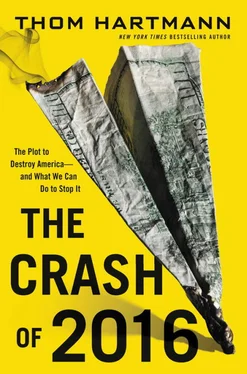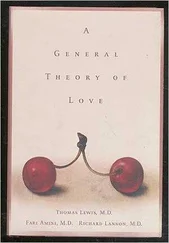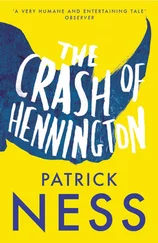The way the political right was able to finally come out of this political slump was by listening to a Republican strategist/faux economist named Jude Wanniski, who wrote a transformative article for the National Observer in 1976 that laid out the new Republican path to power.
Titling his article “Taxes and a Two-Santa Theory,” Wanniski warned that Republicans “embrace the role of Scrooge, playing into the hands of the Democrats, who know the first rule of successful politics is Never Shoot Santa Claus.” 68
He said, “As long as Republicans have insisted on balanced budgets, their influence as a party has shriveled.”
Republicans first learned this lesson in the 1930s and ’40s after the New Deal, when Democratic president Franklin Roosevelt played the role of Santa Claus and gave the American people Social Security and unemployment insurance. At the time, Republicans played Scrooge, arguing that we couldn’t afford it. They played the role of Scrooge in the 1960s, too, as Democratic president Lyndon Johnson played Santa Claus as well, and gave the American people Medicare and other Great Society programs to cut poverty.
And what did Republicans get for playing Scrooge? Electoral defeat after electoral defeat.
Wanniski said Republicans need to play Santa Claus, too. They should be the Santa Claus of tax cuts!
Wanniski wrote, “The only thing wrong… is the failure of the Republican Party to play Santa Claus… The Two–Santa Claus Theory holds that Republicans should concentrate on tax reduction.”
When Democrats give “gifts” like Social Security and Medicare, Republicans can counter with gifts like massive tax cuts, which is exactly what they did when Ronald Reagan was elected in 1980 and picked Wanniski as an adviser.
But there was another dimension to Wanniski’s strategy that he doesn’t explicitly lay out in his article. And that’s this: If Republicans, by playing Santa Claus on their own, successfully pass their tax cuts (as Reagan and Bush 2 did) without cutting spending, then the government will be starved of revenue until eventually it can’t afford the Democratic Party’s social services such as Social Security, unemployment insurance, and Medicare—all things that Republicans have labeled “gifts,” yet are fundamental to the survival of a middle class.
If Republicans scream and yell enough about the deficit they’ve created with their tax cuts, then maybe it will force the Democrats to reverse roles, play Scrooge, and eventually shoot Santa Claus.
I asked Ronald Reagan’s former budget director, David Stockman, about Wanniski’s theory and whether it had motivated the Reagan tax cuts.
Stockman referred to Wanniski as a “raving wildman,” and said the Two-Santa Theory wasn’t the basis of Reagan’s economic program.
But, Stockman admitted, when it became clear that the tax cuts weren’t actually working, and that the deficit was exploding, then the White House noticed.
“The White House became divided between the rational people, who realized that things were out of balance, the numbers weren’t working, the tax cut was too big, and that we needed to take some of it back. On the other side there were the true ideologues, who insisted, ‘Let’s just ride it out and continue to defend this massive tax cut that we couldn’t afford.’” 69In other words, the White House was divided between rational Republicans and the Economic Royalists.
Stockman admitted that the Royalists won the debate within the White House. “Unfortunately there are very few people left in the Republican Party who were on the fiscally conservative side of the debate.”
He went on, “More and more and more, Republicans took on the catechism of tax cuts anytime, anywhere, for any reason. You never have to pay the bills of government… and just blame it on the Democrats anyway.”
Just as Wanniski had laid out. The plan worked.
Republican President Clinton
The irony is that the Economic Royalists in the Reagan administration didn’t do the real harm to the social safety net that had once supported the American middle class.
It was a Democratic president who did it.
Bill Clinton was elected in 1992 after campaigning on a promise to bring a sea change to America similar to the one that Franklin Roosevelt had brought, back in 1932. Clinton’s agenda was called “A New Covenant,” and he summed it up in a 1991 speech at Georgetown University when he said, “To turn America around, we’ve got to have a new approach… we need a new covenant, a solemn agreement between the people and their government to provide opportunity for everybody… a new covenant to take government back from the powerful interests… and give it back to the ordinary people of our country.” 70
But the New Covenant never got off the ground. As Adam Curtis uncovers in a documentary series he did for the BBC entitled The Trap , just a few weeks before Bill Clinton was to take the oath of office, he was paid a little visit by two notorious Royalists, the CEO of Goldman Sachs at the time, Robert Rubin, who would later become Bill Clinton’s treasury secretary, and Alan Greenspan, the chairman of the Federal Reserve. Rubin and Greenspan sat the young president down and explained to him that the Royalists were in charge.
Twenty years had passed since the Powell Memo was first circulated around corporate America. A Democrat just elected to the presidency made no difference to the shadow government of lobbyists, corporate-funded think tanks, and political fund-raisers. Clinton chose political expediency. He chose to carry the Royalist agenda forward.
In his First Inaugural in 1993, Clinton pledged, just as the Royalists wanted him to, to “cut our massive debt.”
Later in his presidency in 1996, sounding like Ronald Reagan, Clinton would declare that the “era of big government is over.” 71It was as though the Royalists had finally made the New Deal say “uncle.”
And then Clinton shot Santa when he “reformed” welfare. Buying into Reagan’s completely fraudulent myths of “welfare queens,” Clinton signed into law the Personal Responsibility and Work Opportunity Reconciliation Act of 1996. The law undid LBJ’s Great Society legislation, which had succeeded in cutting poverty rates in America from 22 percent in 1963 down to 12.6 percent in 1970.
For the first time since the sixties, families in poverty were not guaranteed a lifeline. They eventually had to prove they were working in order to qualify for assistance. This sounded like a good idea in theory, especially during boom times such as the nineties, when there were lots of jobs available. But during recessions, when three or four people are looking for every one job opening, then a work requirement for welfare does a lot of harm to already struggling families.
The stats have borne this out. In the sixteen years after welfare reform, even more people have been kicked off benefits, yet poverty has increased. Before reform, 70 percent of impoverished families had access to a lifeline. But after reform, by 2009, only 30 percent did. 72
This attack on the Great Society was the first of a long series of attacks on the social safety net.
But Clinton’s greatest betrayal of the middle class came when he didn’t listen to Ross Perot.
The year Reagan was sworn in, we were the richest nation in the world, and other than a few wobbles during the two world wars, our national debt had been relatively steady in inflation-adjusted dollars since the administration of George Washington.
We were the world’s largest creditor—more countries owed us money than any other nation on earth. Today, we are the world’s largest debtor nation, and our national debt nearly outweighs our annual GDP.
Читать дальше












